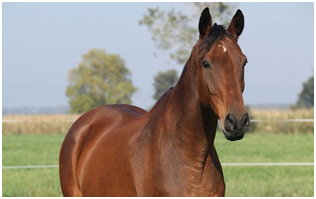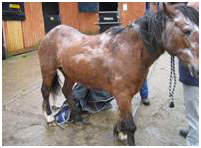Sweet itch or pruritus as it can also be known as is a nasty affliction that affects horses. It can have very unpleasant effects on the horse as it causes them to rub away their skin using whatever rough surface they can to give relief to the symptoms. They will also scratch and bite at the lesions caused by the irritation in an effort to relieve the constant pain that the condition causes. Horses have been known to cause injury to themselves and destruction to the stables and property around them as the itching is quite maddening. It can also render them unable to be ridden as they will refuse to take anything on the skin including a rider.

Veterinary science is attempting to come to terms and cure the condition, yet Sweet itch is still not clearly understood. However, it’s causes are known. These come from flies and midges, essentially biting insects. These intern lead to infections and certain allergies. These small itches build up over time to create a crescendo of discomfort for the horse which is unbearable. How a horse responds to the itchiness before it reaches a critical stage is known as the “pruritus threshold”. A horse may still feel the itching before this threshold is breached but simply not notice or some any outward signs. Lice, which still cause damage to the skin can easily infest a horse, as an example, but it is not until an infection takes hold that the pruritus threshold is exceeded, and the horse begins to manifest real signs of discomfort and anger. This article written by Horse and Hound gives some ways to help manage sweet itch http://www.horseandhound.co.uk/features/how-to-manage-sweet-itch-530771
Sweet Itch is very seasonally orientated. You are much more likely to experience in spring when midges and biting insects are rising to prominence. The damp warm air is a huge encouragement to them and they seek out horses for the rich nutritious blood necessary for their survival. It is wise to know what the horse tell-tale signs of sweet itch are.
- The horse rubs and scratches itself along the mane, tail and back.
- Hair loss. Particularly in the prolific horse hair areas of Mane and tail.
- There are also bald patches that can clearly be seen.
- Skin becoming broken and bleeding. It will also appear very sore.
- There may also be and itching on the belly and leg areas.

Treatment and prevention is the only way to stop Sweet Itch at present as there is currently no known cure. The primary cause is the biting insect, the midges and horse flies as mentioned above. Therefore, good repellent is very wise to begin with. Should there be a case of Sweet itch it is good to know that there are creams and ointments available to relieve the symptoms. Steroids are used to reduce the irritation but in only in conjunction with a decent relieving agent such as a cream. There are many natural remedies on the market that can be purchased for this.


